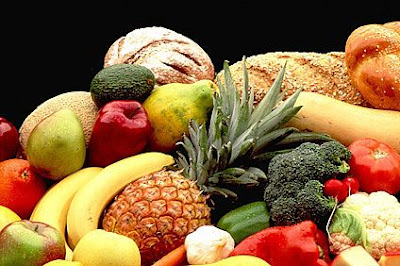
-=Enzymes=-
Enzymes and Activation Energy
-to start a chemical reaction:
-it is necessary to weaken chemical bonds in reactant molecules
-this requires for the molecules to absorb energy
activation energy-minimum amount of energy required to start up a chemical reaction
-one way to provide activation energy: heat up the mixture of molecules
-hotter molecules may collide with enough energy to weaken bonds
-cooler molecules collide with less energy
-heating up a cell would cause many unnecessary reactions to occur at once, including reactions that destroy the cell's structures
-instead, cellular reactions depend on the assistance of catalysts
catalysts: compounds that speed up chemical reactions
enzymes
definition-specialized proteins that are main catalysts of chemical reactions in organisms
-provide a way for reactions to occur at cell's normal temperature
-doesn't supply activation energy to the reacting molecules
BUT
-lowers the energy requirement barrier so that the reaction can proceed at normal cell temperature
-each enzyme catalyzes a specific kind of chemical reaction
-at any moment's of a cell's life, the specific enzymes that are present and active determine which reactions occur
How do enzymes work?
-the shape of each enzyme fits the shape of the particular reactant molecules
substrate-a specific reactant acted upon by an enzyme
active site-region of an enzyme into which a particular substrate fits
-the fit between substrate and enzyme is not rigid
-as the substrate enters, the active site changes slightly which fits the substrate more comfortably
-this places certain function groups of the active site in position to catalyze the reaction
-the tighter grip may also bend the substrate which bends its bonds
Another way that an enzyme can lower activation energy
-by accepting two substrates into adjacent sites
-holding the reactant together helps them to react more easily
So...
enzymes can catalyze the formation of larger molecules into smaller molecules
-an enzyme's structure and shape is essential to its function
also...
-an enzyme's shape is sensitive to changes in its surrounding environment
So....
-factors of pH and temperature can greatly affect:
-how well an enzyme works
-or if it can work at all
this is one reason why cells can only survive within certain conditions
Concept Check:
1.Explain the role of activation energy in a reaction. How does an enzyme affect activation energy?
The activation energy activates the reactants and triggers the chemical reaction. An enzyme lowers the activation energy to a normal temperature.
2.Describe how a substrate interacts with an enzyme.
A substrate enters into the active site of the enzyme, the active site changes shape slightly to fit the substrate more snugly. Then the substrate is converted into products.




